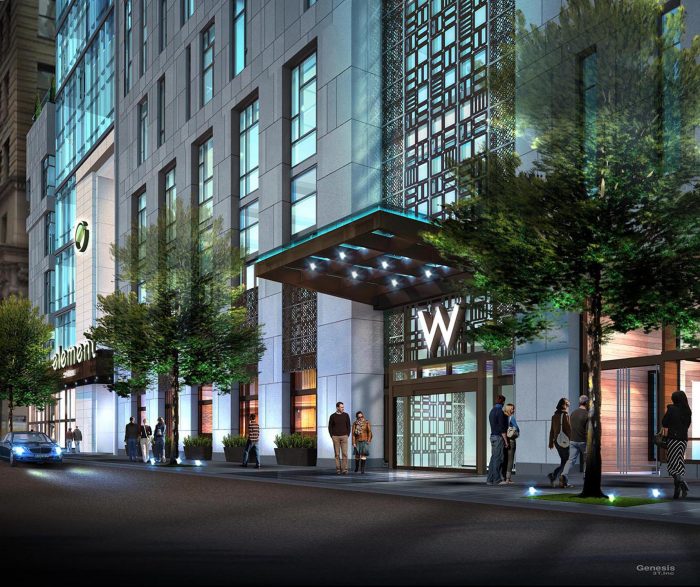Commercial Construction & Renovation: Bellyard | Hip. Cool. Repeat.
The Bellyard on Atlanta’s Westside can dazzle guests at every turn. For starters, the coolest new Midtown hotel on the block features 161 suites and guestrooms decked out with the latest and greatest in technological offerings.
You want cool? Check out the room numbers branded into the floor. Or, take a long look at the art from local designers displayed throughout the hotel, or custom furnishings, cowhide carpeting and that Japanese soaking tub tucked into a massive shower.
The Bellyard West Midtown Atlanta, a Tribute Portfolio Hotel from Marriott, is the perfect complement to Midtown Atlanta’s swath of super hip, smart restaurants, and retail and office spaces. Once the home of cattle stockyards and myriad rail lines, Atlanta’s Westside is the latest “must be” place in the city’s growing legacy. Continue reading here.
Building Design + Construction: Programming Takes Precedence
“Other mixed-use trends center on ‘more’: more food and beverage, more roof decks, and more parking structures whose designs are adaptable if ride sharing leads to reducing personal car use.”
Teammate Lamar Wakefield explains the latest trends in mixed-use developments and NELSON’s latest work. Read more with Building Design + Construction here.
Interior Design Trends 2019: What Can We Expect?
2018 ushered in a strong economy, a stock market rollercoaster, and some controversial trade policy decisions. How has this impacted our industry? The labor market remains strong and interest rates are beginning to rise. We expect end users to start asking for materials that last longer than a short-term lease, as we witness occupancy costs rising. Trade tariffs are prompting interior designers to pay attention to where a product is manufactured. Many foreign manufacturers are raising prices to protect their profits and to stay in business. We expect that this issue will be top-of-mind for many of our clients in 2019.
We now have plenty of projects to go around, but we don’t necessarily have the labor pool to construct them. We would expect to see construction costs rising and general contractors to become more selective on which assignments to produce. What does all of this mean for interior design projects in 2019? Let’s have some fun and take a shot at what we can expect to see this year!
Midpoint Magazine: The office renaissance: future of work
“A recent study suggests that 87.5 percent of global employees have missed face-to-face social interactions since remote working was introduced and while the return to the office will satisfy this craving for most, new workstyles and re-imagined office spaces will prompt a new way of communication that integrates and better serves employees in and outside the office,” – Anne Gibson
Teammate Anne Gibson shared insight into how employers can differentiate themselves to meet the demands of the evolving workplace and NELSON’s holistic approach to making the transition back into the workplace as seamless as possible. Read more with Midpoint Magazine here.
Work Design Magazine’s 2024 Next Work Environment Competition
Our Financial Services Firm Pilot Ideation Project has earned an honorable mention in Work Design Magazine’s 2024 Next Work Environment Competition. The team—Marcia Dolga, Danijel Pocanic, Nicole Fernandez, Amanda Ferri, and Maritza Estrada—explored the question: is the open office concept dead? With common concerns like distractions and lack of privacy, NELSON Worldwide’s study rethinks the open office, introducing a flexible workspace with minimal demolition and furniture solutions. The design features three distinct zones—Active, Shared, and Focus—to cater to a variety of work styles and needs.
Read more with Work Design Magazine here.
Business of Furniture: Leveraging Data & Design to Drive Confidence in Returning to the Workplace
Business of Furniture highlights key trends from NELSON Worldwide’s Evolving Workforce Expectations study, focused on employees’ sentiments about returning to the office post-COVID-19. Read more here.
Handing Over the Reins: Creating Experiential Retail Environments That Put Shoppers In Control
While COVID-19 had an immediate impact on the retail industry, brands quickly got creative, offering click-and-collect, curbside pickup, and speedy shipping options, giving consumers more control than ever before. And while these seamless amenities will continue to be anticipated, brick-and-mortar will still have a critical role in the future of retail.
So how do brands evolve their physical footprints into vibrant destinations consumers still want to visit? The best brands know how to captivate their audience at each visit, making a lasting impression and pairing it with a seamless experience. The reality is, these environments will have to remain experiential and engaging to make an impact.
Retailers can prevail over the hardships that come with COVID-19 by preparing for the future consumer, celebrating self-service, learning from luxury brands, and paying close attention to the smaller, local stores in their real estate portfolios.
Celebrate Self-Service
Advancements in technology have put consumers in the driver’s seat, accessing an unlimited amount of data from the palm of their hand. From convenience stores and grocery shops to car dealerships and beauty brands, retailers have experimented with contactless, and even unmanned, shopping experiences, and consumers are catching on. Research from eMarketer says 61 percent of consumers globally are interested in using unmanned stores. This seamless engagement is not only being accepted, it’s being requested.
What began as leveraging the latest technologies for efficiency, is now becoming a sought-after service model due to the onset of COVID-19. Consumers are not only more cautious about the spread of germs, but also craving a quick and easy checkout process, limiting the amount of time they spend in a physical store. And due to the general chaos consumers are feeling in 2020, control will be strongly desired in the coming years.
While these new, contactless methods are necessary, the overall experience must remain engaging, by eliciting moments of surprise or delight. For example, some beauty brands have taken a more playful approach to try on makeup now that customers may be more sensitive to in-store trials. Korean beauty brand Innisfree is taking advantage of smart mirror technology with facial recognition that allows customers to see what colors and styles look best on them. They can also share or save the result, all while reinforcing safety and trust throughout the process.
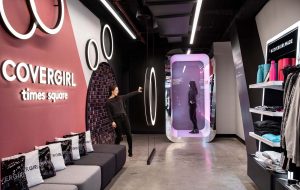
Covergirl Times Square – NELSON Worldwide
Learn from Luxury
When observing what brands are thriving through the global pandemic, luxury brands are unexpectedly set up for success. The type of white-glove, concierge service offered at a high-end retail store is unmatched in the shopping industry, and consumers are starting to recognize the value of this type of personalized, one-on-one attention.
Non-luxury brands can emulate this type of service by elevating their in-store experience, creating loyalty programs and VIP experiences that go beyond discounts and early access, instead of making it part of the in-store shopper journey. Giving consumers the option to shop by appointment, or even arrange for personal shopping assistance can help them feel empowered, pampered, and valued, improving the overall shopping experience. And this attention to detail doesn’t end with fashion, jewelry, or handbag brands, it can expand to beauty, electronics, home décor, and more.
Portland-based fashion retailer Garnish offers this type of customer experience in their stores, including appointment-based shopping with a stylist. The appointment includes a complimentary coffee, and carefully curated wardrobe pieces that highlight each customer’s shape and style.
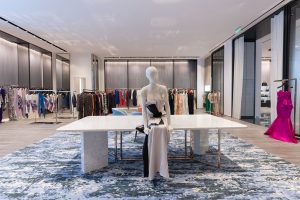
Avanti – NELSON Worldwide
Embellish Non-Flagship Stores
With e-commerce dominating the market, the role of the physical store is evolving. The buzz around mega-flagship stores in major cities with a full line of merchandise is no longer as significant to consumers. Convenient, localized shopping experiences are more important than ever before, and retailers must rethink their real estate strategy and portfolio to attract and retain loyal shoppers.
Some stores may not focus on selling product, but instead, adopt a showroom model or offer relevant programming or services. The key will be connecting with shoppers in a meaningful, authentic way. Smaller, more adaptive environments will be welcomed by consumers and keep them coming back for new rotational merchandise.
Macy’s latest specialty concept, Market by Macy’s embodies local and creates a unique platform for storytelling, through curated merchandise, unique programming, and differentiated design. This small-format concept leverages a more residential design and bold graphics to introduce unique, brand stories while complementing the local neighborhood of each location. Customers can shop a curated mix of traditional Macy’s brands, as well as a rotational collection of private labels, direct-to-consumer products, and local apparel and home goods.
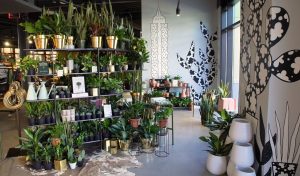
Market by Macy’s – NELSON Worldwide
The future of retail experiences have one thing in common, and that’s putting consumers first. The most engaging experiences will tap into self-service, unmanned options, as well as personalized, detail-oriented resources, and finally, locally celebrated moments of engagement. Together, each of these pillars will shape the role of the physical store, and keep consumers coming back long after the pandemic.
More commentary from Heesun Kim, design director at NELSON Worldwide, on using design and technology to reimagine experiential retail is featured in Retail Touchpoints.
Retail Revised: Real-time Discovery
In-store retail is back, but with its return, there is no doubt that the way we shop, or want to shop, has changed forever. With the growth of e-commerce and the adoption of new shopping habits, retailers must act fast to create modern, in-store experiences that complement their digital presence while differentiating their offering from the saturated retail market.
Whether it’s online or in-store, revised retail strategies are crucial for brands as consumer behavior evolves. The stores of tomorrow must serve a purpose beyond that of the pure sales opportunity and transform into a destination where service, convenience, and discovery take place. In our latest ‘Retail Revised’ series we’ll be discussing key themes retailers must consider to enhance their in-store experience. This week we are exploring concepts and ideas that encourage discovery both instore and online:
Thanks to the boom in live streaming, influencer social media marketing, and e-commerce, now more than ever, people know what they want to buy before they even step into a store. The days of rummaging through racks of clothing and aisles of home goods are dwindling, but that doesn’t mean that physical environments don’t hold value…it’s the opposite. Retailers must not only embrace new online marketing channels but explore ways to repeat and enhance these experiences within brick-and-mortar.
Now and in the future, there is an opportunity to pivot in order to transform stores into meaningful experiences that can’t be replicated online. Successful shopping environments will bring light to the uncertainty of online ordering and will spark real-time discovery and inspiration. We expect to see more ‘next-generation’ spaces and for showroom concepts to evolve. Below we’ve highlighted brands and concepts that are developing spaces that encourage real-time discovery:
Nike Live Store
Located in its birthplace of Eugene, Nike’s latest Live store concept pays homage to its roots with a small-format footprint that integrates online-to-offline capabilities. As part of the brand’s digitally empowered phase the concept was designed to “be a home for athletes and anyone playing sports or making movement a part of their life.” The store emphasizes community and builds upon the learnings of other Nike destinations and lab-like spaces for testing new experiences and offerings.
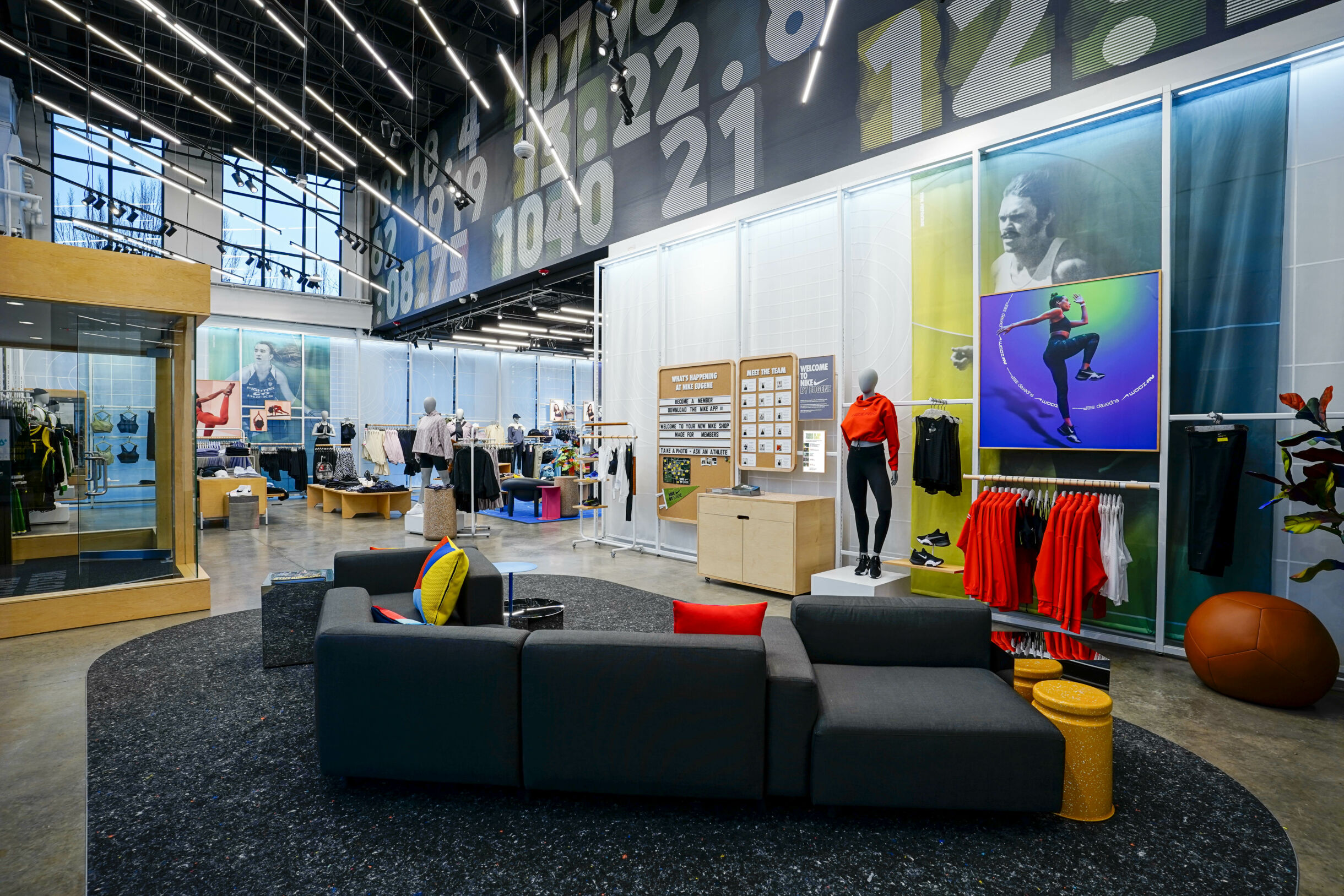
Photo: Nike
H Beauty by Harrods
Launched by Harrods, H Beauty is upgrading the way people shop. In-store and online, customers can discover exciting make-up, skincare, and fragrance brands. A destination where shoppers can explore curated brands and products, the concept includes interactive “Playtables” where shoppers can experiment with make-up, skincare stations for mini treatments.
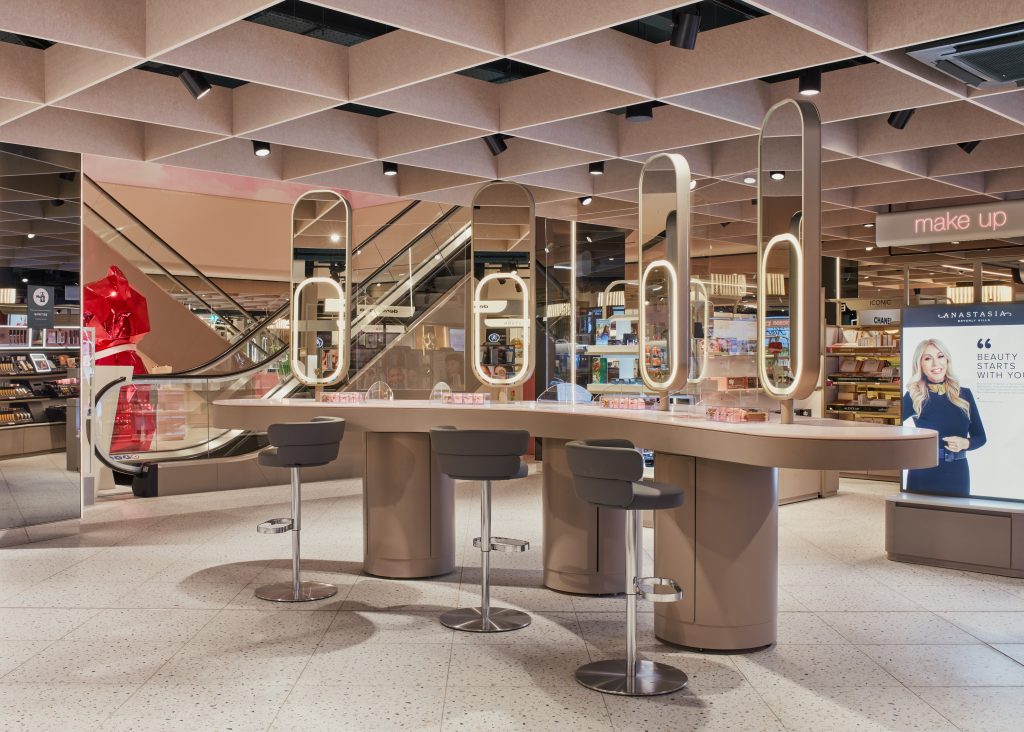
Photo: Harrods
Bayview Village Live Virtual Shopping Event
Bayview Village, “Canada’s most prestigious shopping center” recently announced the launch of its live virtual shopping events, dubbed Covet & Click. After registering for the event online, shoppers receive a link to the one-hour live event where a curated selection of must-have items from Canadian fashion designers will be presented.
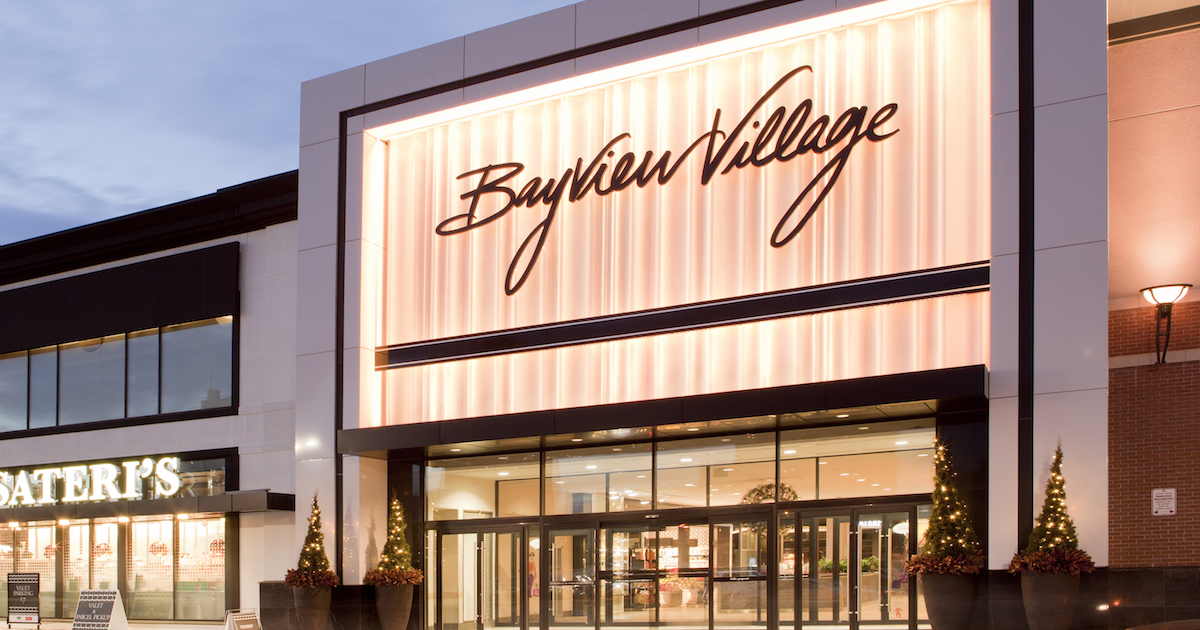
Photo: Bayview Village Shopping Center
MASERATI X FACEBOOK
Tapping into the repurposing of physical space as e-commerce booms, Facebook and luxury vehicle manufacturer Maserati will debut a next-gen expo showroom at Westfield London that features VR lounges, lifestyle theatres, and live performances.
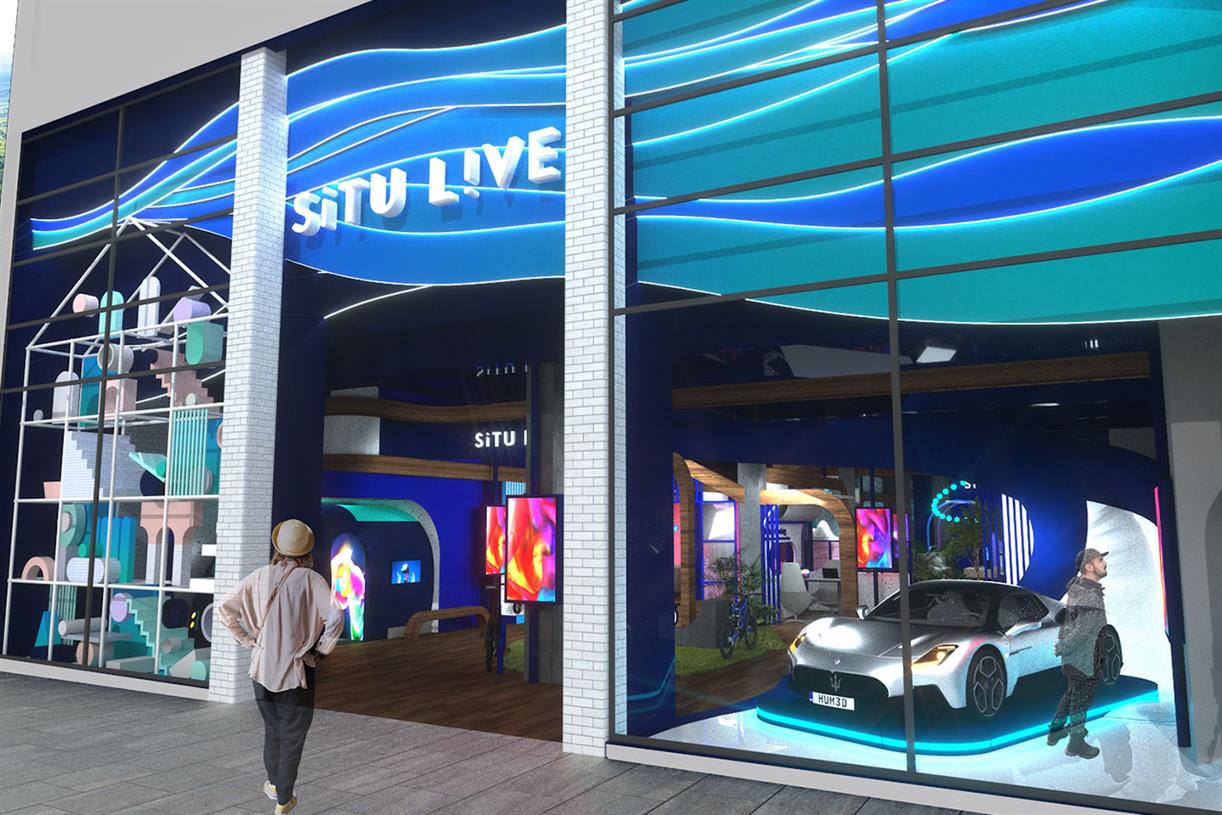
Photo: Maserati
Retail Amenities Bracket Challenge
The results are in for NELSON Worldwide’s Retail Amenities Bracket Challenge! After 16 matchups, voting revealed which experiential amenities people are looking for in their next shopping experience.
FIRST PLACE: Beer Garden
As this year’s top choice, this amenity highlights consumers’ desires for unique food and beverage concepts that allow them to connect with friends and family, unwind, and tap into a more localized offering.
SECOND PLACE: Concert Venue
As a close second, this engaging amenity showcases the on-going attraction to experiences over product, allowing guests to enjoy unique entertainment opportunities.
THIRD PLACE: Nature Trail + Farmers Market
Tying for third place, the farmers market and nature trail amenities showcase consumers’ growing interest in wellness. From fresh food offerings to opportunities for fitness, this overarching theme should continue to be a focus for every development.
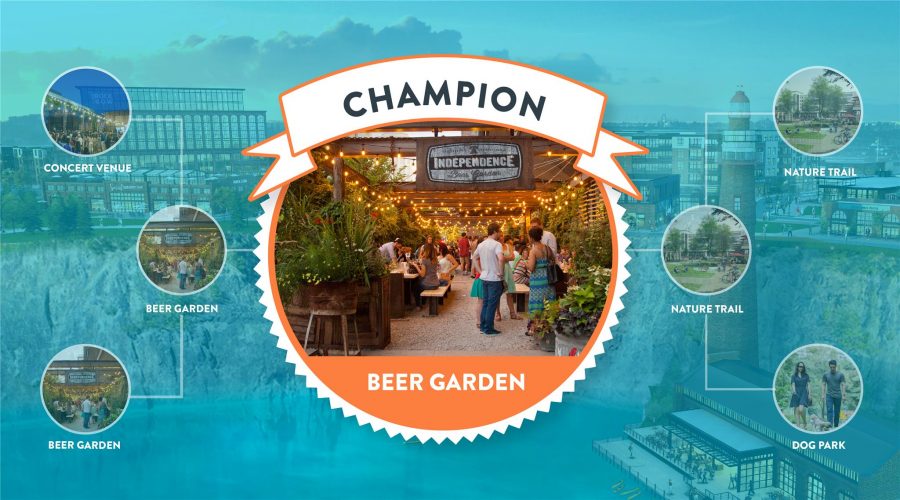
Now more than ever, consumers are looking for a differentiated shopping experience.
Amenities like ride share lounges, curbside pickup, and locally-driven food halls are replacing outdated mall offerings. We’ve set out to discover what experiential, new offerings shoppers are looking for and we want to hear from you.
Want more insights from our team? Email us and we’ll send you our latest Mixed-Use Trend Report with industry inspiration, trends, and the latest best-in-class case studies.
Architecture Spotlight: Cheryl Smith
At NELSON, we believe architecture has the power to create a transformative sense of place, supporting communities and strengthening the fabric of cities across the nation and around the world. Recently named the #2 fastest growing architecture firm, we’re celebrating our growth, people, and projects that are boldly transforming architecture. To do so, we’ve created our latest series, “Architecture Spotlight” to introduce you to a few thought leaders within the NELSON Architecture Team. You’ll not only get an exclusive look at our people, but hear what’s in store for the future.
This week we interview Cheryl Smith, AIA, LEED AP Principal and Studio Director, NELSON Philadelphia. Keep reading to hear more about her career, knowledge, and expertise in architecture:
Q: What is your role at NELSON and how long have you been an architect?
A: I have over 30 years of experience in Hospitality, Mixed-Use, Office & Retail design. Working out of the NELSON office in Philadelphia, I am one of several Directors for our Architectural Studio. I assist clients with their projects, organize staffing resources and teams, write proposals, answer technical questions, review project documents, and work closely with contractors to see our projects through construction. In addition to my work in the local Philadelphia office, I am a member of NELSON’s Technical Leadership Council helping to develop the best practices for architecture teams across the company. Additionally, I’m collaborating on several initiatives including research on the AIA 2030 Commitment as a member of NELSON’s Sustainability Platform Committee.
Q: Tell us about some of your latest and greatest projects.
A: Over the next few months, we will be wrapping up the design and construction of the W and Element Hotels, a dual-brand, 755 room skyscraper hotel opening in downtown Philly in March 2020. Other new work includes two new high-rise buildings in the Philly. It’s an exciting time in the life of these projects as we see them rising out of the ground, seeing the team’s hard work finally come to life.
On-going work includes the Borgata Hotel Casino & Spa in Atlantic City where we have been fortunate to work with them since we were first awarded the project 20 years ago!
Q: What is your favorite architecture trend of today?
A: A favorite growing trend of mine is designing higher performance buildings. These are buildings that are more sustainable to our environment; reducing energy and water usage, and helping to reduce our embodied carbon footprint. This encompasses designing buildings with improved thermal performance and proper window to wall ratio, transforming existing structures for new use, using green roofing systems, and implementing modular systems to reduce material waste.
Q: What advice would you give a young architect?
A: I often advise young architects to follow their passion, have fun, and get involved in their community.As a young architect, I had volunteered to be a mentor for students participating in an afterschool high school program called the ACE Mentor Program where we introduced students to careers in architecture, engineering and construction management. It was both humbling and rewarding and I made connections that will last a lifetime. If there is a program like this available in your area, I highly suggest participating.
Q: What do you think the future holds for architecture?
A: The future holds opportunities for architects to improve the environment for future generations. I really believe that the way we practice architecture and the way buildings are constructed today will and must dramatically change during the next 5 to 10 years. Disruptive technologies should offer leadership opportunities for architects in the future as the integration of complex building systems will still be necessary. In the future, perhaps our virtual models are not only used for design presentations, performance modeling, and overall design integration, but also for logistics, real-time pricing, procurement, and fabrication? How we do this depends not only on the future direction of the technology disruptor but also, how we embrace the technology changes.
Q: What is the biggest challenge the architecture industry faces today?
A: One of today’s biggest challenges is managing risks, as today our building designs are more complex with little construction advances. When not managed properly, this can cause lots of problems, but incorporating best practice tools through an integrated design process will help in managing or overcoming those risks.
Q: What sets NELSON apart from other architecture firms?
A: It is the quality of the people at NELSON that differentiate us from other firms as we focus on transforming diverse practice areas into unique experiences for people. Since becoming part of NELSON, I have been amazed at the level of giving and thoughtfulness of everyone, as well as how respectful and considerate everyone is among each other. These great people qualities instill engaging team collaboration in an integrated design approach which leads to holistic solutions for our clients.
